
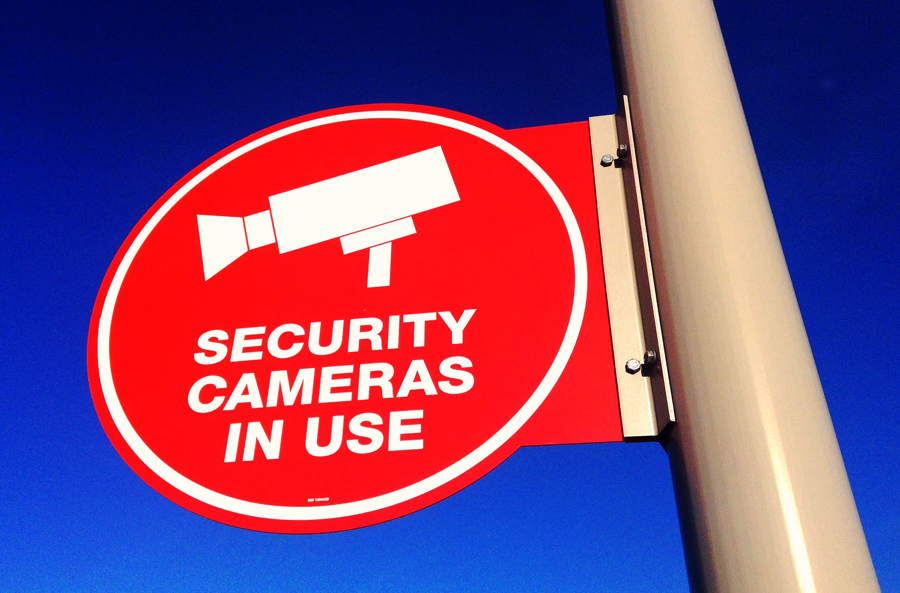
Image by Mike Mozart via flickr
In the ever-evolving landscape of sports, where competition is fierce and the stakes are high, maintaining fairness and safety have become two paramount concerns.
As technology continues to weave its way into every aspect of our lives – from our cars and refrigerators to our classrooms and retail stores - sports have embraced its advancements to ensure that games are played ethically, and that athletes and spectators remain safe.
One of the most significant technological advancements in this realm has been the integration of security cameras. By implementing recording cameras with a slew of features and sensors into venues, equipment, and monitoring systems, various sports are reaping the benefits of technology by making their processes more transparent and increasing the perception of fairness and safety.
In this article, we'll dive into how security cameras are transforming the world of sports, promoting fair play, enhancing safety, and revolutionizing the fan experience.
Security Cameras and Fair Play
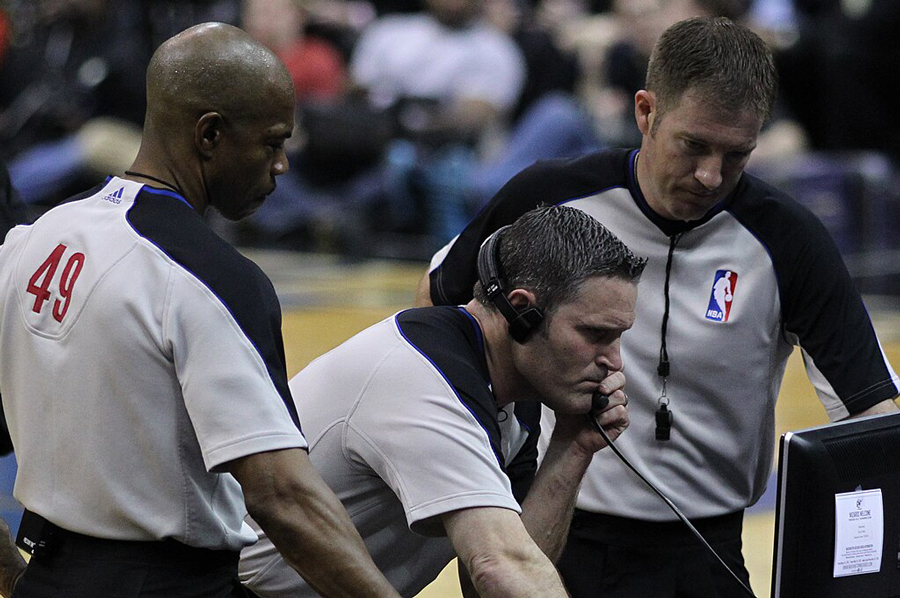
Keith Allison from Owings Mills, USA, CC BY-SA 2.0, via Wikimedia Commons
With the advent of modern camera technology, sports organizations have been able to closely monitor games, detect rule violations, and ensure that competitions are decided based on skill and strategy, rather than unfair advantages. Integrity and fairness are the hallmarks of fair play. Within those bounds, the spirit of competition can be expressed in a manner that shows honesty and grace.
Some sports, and even prestigious competitions like the Olympics, have been plagued in recent decades with accusations of bad behavior – violence, cheating, performance enhancing drugs, and exploitation in an all-out effort to win.
How can cameras support the concept of fair play? While integrity and honesty are essential to fair play, cameras help keep athletes and officials honest by recording their actions.
Monitoring and Enforcement of Rules
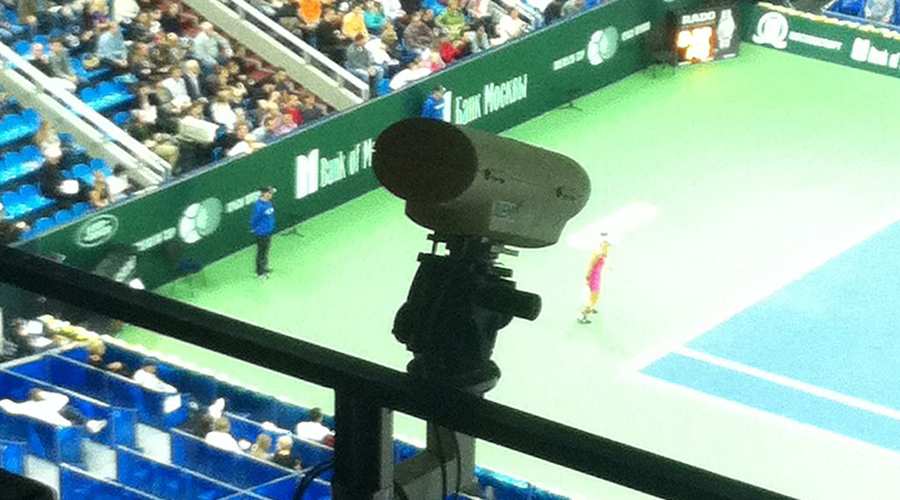
JukoFF, CC BY-SA 3.0, via Wikimedia Commons
Security cameras have emerged as crucial tools in monitoring and enforcing the rules of various sports. These cameras provide real-time footage of players in action, allowing referees and officials to make accurate and informed decisions.
Whether it's tracking the trajectory of a tennis ball to determine whether it landed in or out of bounds or analyzing the intricacies of a soccer goal-line decision, cameras offer an unparalleled level of precision in judging these critical moments that can decide the outcome of a competition.
The rise of security cameras has dealt a blow to cheating. In sports like cricket and baseball, for instance, cameras are used to scrutinize player behavior for signs of foul play, such as ball tampering or stealing signs. The integration of cameras not only promotes fairness but also upholds the integrity of the game.
Smart technologies allow for ever-expanding capabilities to flourish with the advent of artificial intelligence (AI) and machine learning (ML) taking the lead in the categories of up-and-coming advancements. A high-end security camera system is far more than stationary cameras that provide an eagle-eye view of the field. While cameras play a large part, they are solitary endpoints in a network of devices that give referees and broadcasters access to advanced techniques to analyze plays.
For example, synchronized multi-angle cameras can give a three-dimensional view of the field that would put some Hollywood productions to shame. Automatic PTZ camera tracking can follow game balls or other objects and give real-time feedback on player performance.
Since cameras feed into larger data warehouses, some monitoring systems can provide predictions on the next play and visualize outcomes before they happen. Analytics and accompanying video leaves officials armed with better data to make appropriate and fair rulings.
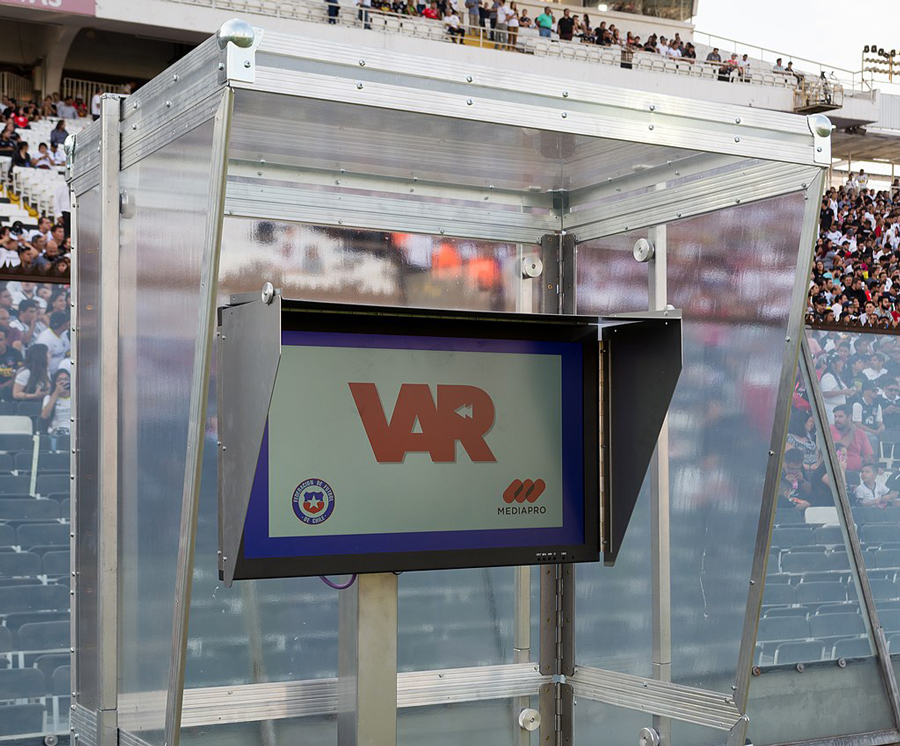
Carlos Figueroa, CC BY-SA 4.0, via Wikimedia Commons
A video assistant referee (VAR) system was successfully used during the 2018 FIFA World Cup - a first for the world of soccer. This technology allowed a centralized video operations room to support the decision-making process of the referee on matters like goals and offenses. Super slow-motion and ultra slow-motion cameras reduced the chaotic action down to a manageable level so reviews could be made on points of contact of physical offenses or the positions of players that were flagged.
Enhancing the Fan Experience
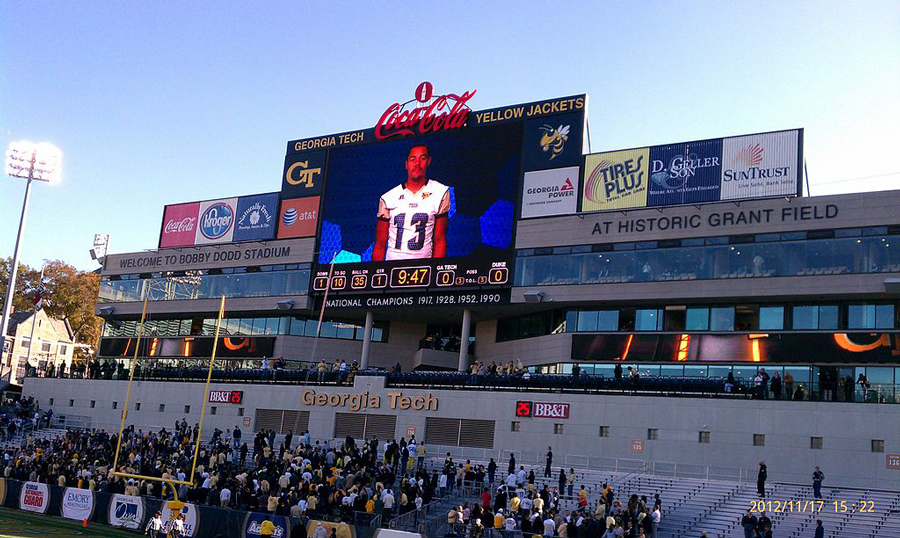
Mistercontributer, CC BY-SA 3.0, via Wikimedia Commons
Security cameras are not just for the benefit of athletes and officials; they also significantly enhance the fan experience. Through technologies like instant replays in the NFL, fans are allowed to relive the most exhilarating moments of a game. These technologies not only add an extra layer of excitement but also help fans better understand complex rulings that can sometimes be hard to decipher as they happen.
While individuals may complain that video reviews slow the flow of a game, referee reviews of complicated game situations can also add to the shiver of anticipation as a game hangs in the balance. In reality, 99.3% of plays in the 2022 NFL season proceeded without challenge or booth review.
Additionally, the integration of security cameras has facilitated fan engagement in unprecedented ways. Interactive fan zones, where spectators can view the game from multiple angles and even experience virtual reality replays, have become a popular attraction in modern stadiums. This immersive experience brings fans closer to the action, fostering a deeper connection between athletes and their supporters.
Security Cameras and Safety
Beyond promoting fair play and enhancing the fan experience, security cameras play a pivotal role in ensuring safety both in the stadium and among players.
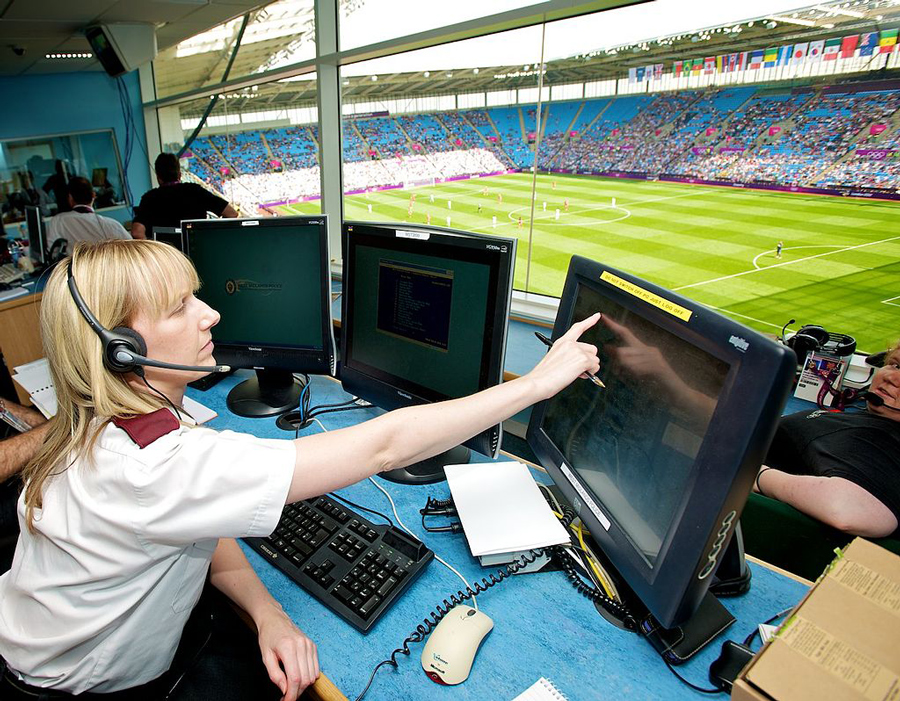
West Midlands Police from West Midlands, United Kingdom, CC BY-SA 2.0, via Wikimedia Commons
Monitoring Stadium Safety
In terms of stadium safety, intelligent IP security cameras contribute to crowd management, ensuring that large gatherings proceed smoothly and without incident. Crowded conditions at sports venues can be a dangerous situation if they are not managed properly. Entrances and exits, ticket booths, escape routes, and food stalls should all be continuously observed to provide both a high level of user experience and a safe environment.
By closely monitoring crowd movements and identifying potential bottlenecks, cameras enable authorities to take proactive measures and prevent overcrowding, thus mitigating the risk of accidents or stampedes in emergencies.
Video surveillance can also be equipped with automatic alerts for trespassing, theft, or perimeter breaches and allow security to investigate incidents quickly and thoroughly. On top of monitoring, security can also spot and intervene in fan arguments and fights.
Moreover, cameras also monitor the structural integrity of stadiums, detecting any signs of wear and tear that could pose safety risks in aging structures.This proactive approach to maintenance guarantees the well-being of spectators and athletes alike.
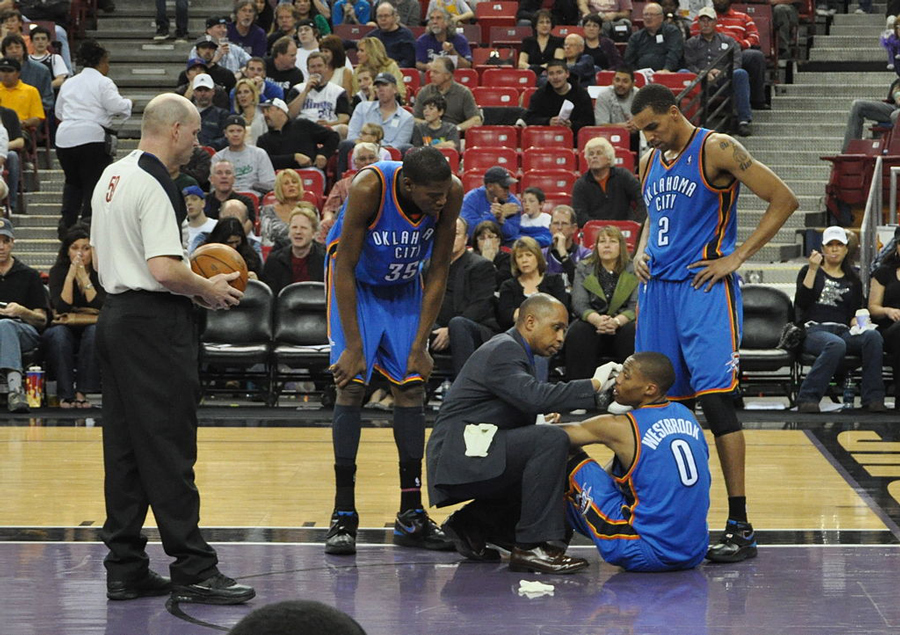
J.smith, CC BY-SA 3.0, via Wikimedia Commons
Player Safety
In 2019, about 15% of all US high-school student athletes self-reported sports-related concussions in the preceding year. Traumatic brain injuries accounted for about 190 American deaths every day in 2021 alone. For athletes, security cameras have become vital tools for injury detection, medical team collaboration, and training analysis.
Injuries can be quickly identified on camera, allowing medical teams to assess the severity of the situation and make informed decisions about the treatment of ailing athletes. The ability to review the footage from a security camera recorder of an injury can also aid in post-incident analysis, helping teams identify the cause and implement measures to prevent similar incidents in the future.
From a training perspective, athletes and coaches alike can benefit from the detailed analysis provided by surveillance cameras. Players can review their performances, analyze their techniques, and make necessary adjustments to improve their skills.
When practice and gametime videos are not only captured but also data-mined for every available detail, they can provide important insights into how a player’s performance can be improved over time. By sharing data and collaborating an entire team can benefit from these analyses and raise the level of experience across the board. An integrated approach becomes even more valuable as multiple analytic sessions will begin to show developing trends across a season.
Ethical Considerations and Privacy Concerns
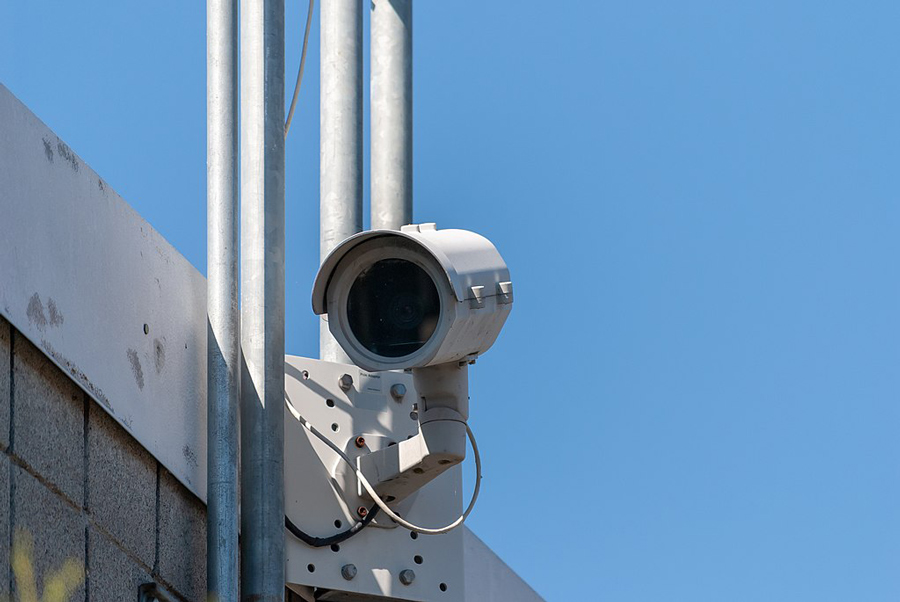
© Cody Logan / Wikimedia Commons
While there are many positives to security camera systems in the world of sports, not everyone is eager to see these technological marvels permeate into arenas around the globe.
Balance of Security and Privacy
While security cameras offer numerous benefits, their use in sports does raise some important ethical considerations and privacy issues. The notion of constant surveillance, both on and off the field, has sparked debates about the extent to which athletes' privacy should be protected. Striking a balance between the need for transparency and the right to privacy is a challenge that sports organizations must navigate carefully.
As an example, the American Civil Liberties Union (ACLU) takes a hard stance on video surveillance topics like facial recognition, recording and storing big data, and drone recordings. Their work in the courts and through legislation is designed to defend the rights of individuals and will surely affect the use of video monitoring in all areas of life. The National Football League Players Association (NFLPA) investigated complaints in 2020 from New York Jets players after it was discovered that camera systems were placed in the team’s locker room, ostensibly without the players’ knowledge or consent.
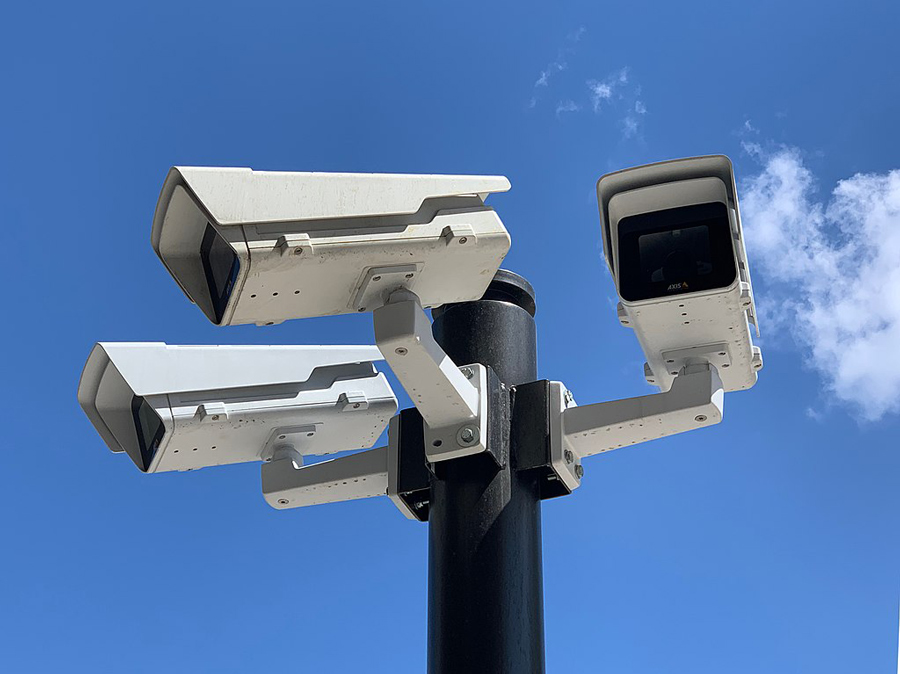
Benoît Prieur, CC0, via Wikimedia Commons
Responsible Usage and Oversight
To address ethical concerns, many sports organizations have established guidelines and best practices for the use of security cameras. These regulations outline the permissible uses of cameras, the extent of surveillance, and the measures in place to safeguard athletes' rights. By adhering to well thought out guidelines, sports leagues can ensure that the benefits of camera technology are maximized while respecting the rights of those involved.
An example of rigorous guidelines is the Code for Sports Governance which describes levels of transparency, diversity, inclusion, accountability, and integrity that are required by sports organizations receiving UK government funding. Since 2016, this Code has been adopted by 4,000 organizations to create a standard framework of behavior across diverse sports and physical activity organizations.
Case studies provide insight into the impact of security and surveillance cameras on sports – both on and off the field and the results show that sports are safer and more transparent because of technological additions. For instance, the implementation of goal-line technology in American football and the use of cameras to review contested decisions in baseball have both resulted in fairer outcomes and enhanced the credibility of these sports.
Looking to the future, the role of security cameras in sports is poised to expand even further. A report from Deloitte shows that the sports industry is poised to deliver seamless user experiences with high-quality digital interactions.
Depending on fan preference, new types of interactions could take the form of augmented or virtual reality sessions, internet of things (IoT) devices designed for their favorite sports, and live or predictive analytics. Additionally, smart camera advancements in artificial intelligence and data analytics are likely to provide deeper insights into player performance, enabling teams to make more informed decisions and enhance their strategies.
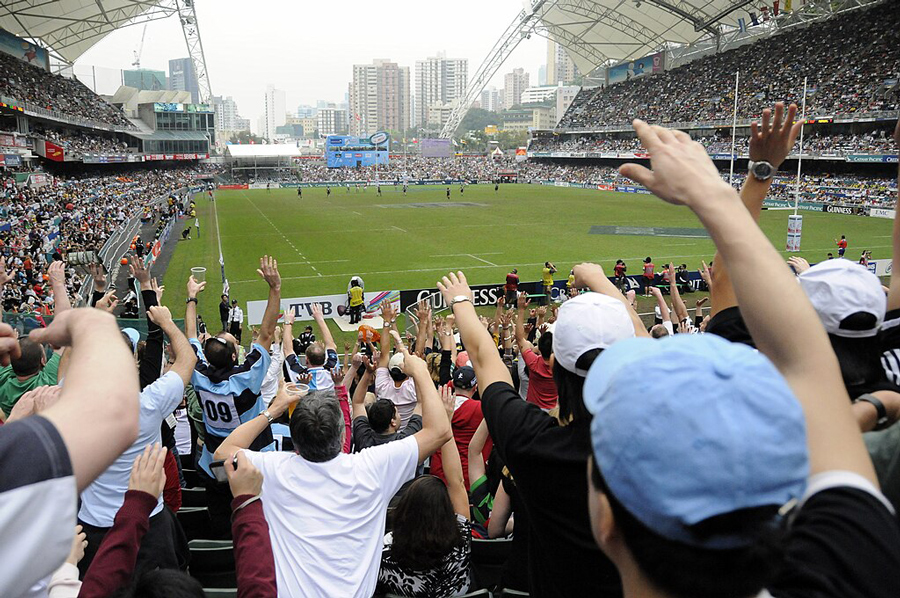
Jesús Gorriti, CC BY-SA 2.0, via Wikimedia Commons
Conclusion
In conclusion, security cameras have emerged as indispensable tools in modern sports, ensuring that the following three goals are more easily achieved.
- Fair play – Cameras ensure that the rules of the game are followed and enforced, and one team does not receive unfair advantages because of poor referee rulings.
- Enhanced safety – Players and spectators can enjoy the game in a more secure environment when video recording systems are used to ensure the venue is in good repair and crowds are well-managed. Athletes also benefit from camera systems that allow for the review of their performance and injuries.
- Elevated fan experience – Advanced camera features that give fans a stellar event to enjoy with an immersive experience.
While their benefits are undeniable, ethical considerations and privacy concerns must be addressed to strike a balance between transparency and athletes' rights.
As we navigate this dynamic landscape, security cameras will continue to play a pivotal role in shaping the future of sports, allowing athletes to compete at their best while fans revel in the excitement of the game.
References and Citations
- https://stillmed.olympic.org/Documents/OVEP/Seychelles/12._4_FairPlay.pdf
- https://www.cdc.gov/traumaticbraininjury/index.html
- https://www.hawkeyeinnovations.com/our-technology
- https://www.fifa.com/technical/football-technology/football-technologies-and-innovations-at-the-fifa-world-cup-2022/video-assistant-referee-var
- https://operations.nfl.com/officiating/instant-replay/nfl-instant-replay-process/
- https://www.asmag.com/showpost/27626.aspx
- https://www.yahoo.com/video/jets-players-complain-nflpa-surveillance-cameras-locker-room-nfl-231435556.html
- https://www.sportengland.org/funds-and-campaigns/code-sports-governance
- https://www2.deloitte.com/content/dam/Deloitte/uk/Documents/deloitte-uk-future-of-sport-report-updated.pdf

